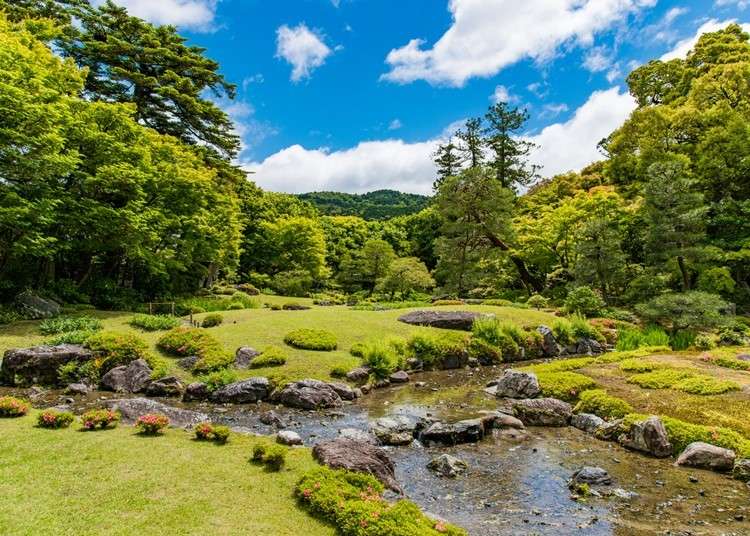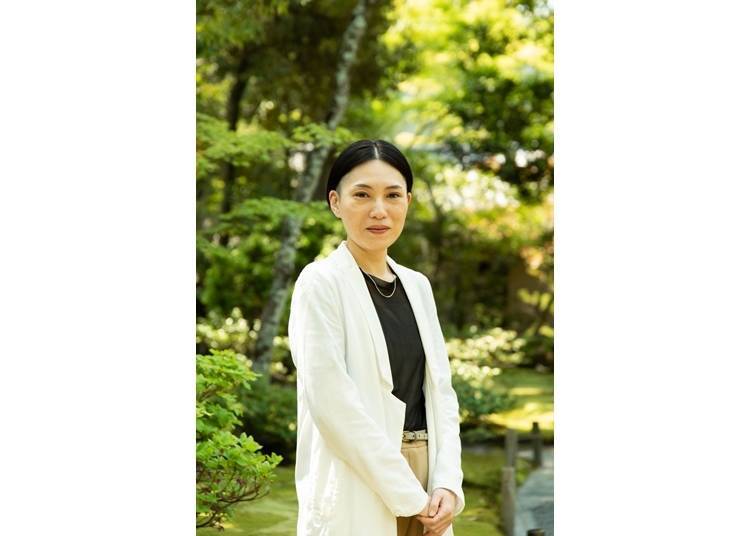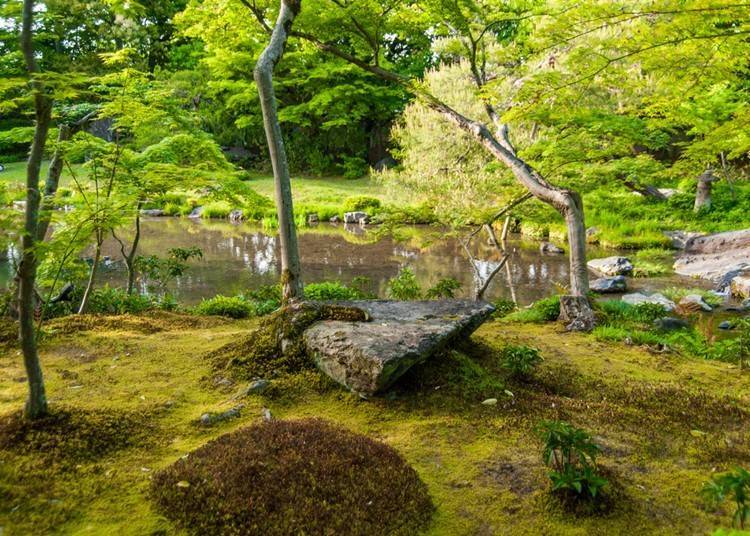
There are plenty of beautiful Japanese gardens in Kyoto that are worth visiting. At a Strolling Pond Garden, you can stroll around a large pond or hop on a boat.
Karesansui, or dry landscape gardens, replicate magnificent scenery and the spirit of Zen using no water, just stones and sand. There's a mysterious charm to these Japanese gardens that has grown and captivated viewers' hearts throughout its history, and tempts one to gaze out at them forever.
Saki Yamada, director of the Heritage and Garden Artistry division of the long-established Kyoto landscaping firm Ueyakato Landscape, founded in 1848, lets us in on some secrets about Japanese gardens and shares tips on enjoying them.
Top photo: Murin-an (Photo: Ueyakato Landscape)
We speak with Ueyakato Landscape, a landscaping company that develops scenic gardens

Saki Yamada, Heritage and Garden Artistry Division Director, Ueyakato Landscape (Photo: Ueyakato Landscape)
We spoke with landscaping firm Ueyakato Landscape. Since its founding over 170 years ago, the company has been the exclusive gardening company for Nanzen-ji Temple and is currently involved in the cultivation and management of a number of scenic gardens designated as cultural properties.
Amongst these are Higashi Honganji Temple and Chishakuin Temple. They have also designed traditional gardens in a modern style for attractions such as the Fukuda Art Museum and Hoshino Resorts, as well as overseas in Vancouver, Dubai, and Singapore.
Concept and history of Japanese gardens

Murin-an (Photo: Ueyakato Landscape)
There are various types of Japanese gardens. There are gardens that incorporate background scenery such as distant mountains into the garden landscape, gardens that include ponds for strolling around (strolling pond garden), dry gardens (karesansui), which use rocks and stones to create imagery of flowing water, and tea gardens (chaniwa).
However, in some cases, a dry garden may also act as a strolling garden, or a strolling garden may contain a dry garden within it. Therefore, it isn't always possible to determine a garden's type from its design alone.
Instead, Ms. Yamada of Ueyakato Landscape suggests focusing on the essence of the garden rather than its structure by contemplating the garden's history and how people felt about it in the past.
The history of Japanese gardens dates back to the 6th century Asuka Period. At that time, they mostly functioned as ceremonial spaces.
However, during the Nara and Heian Periods of the 8th and 9th-12th centuries, the aristocrats' power increased, and gardens were built for socializing as open, luxurious spaces with large ponds.
When samurai came to power in the 13th century, dry gardens arose from the concep…

